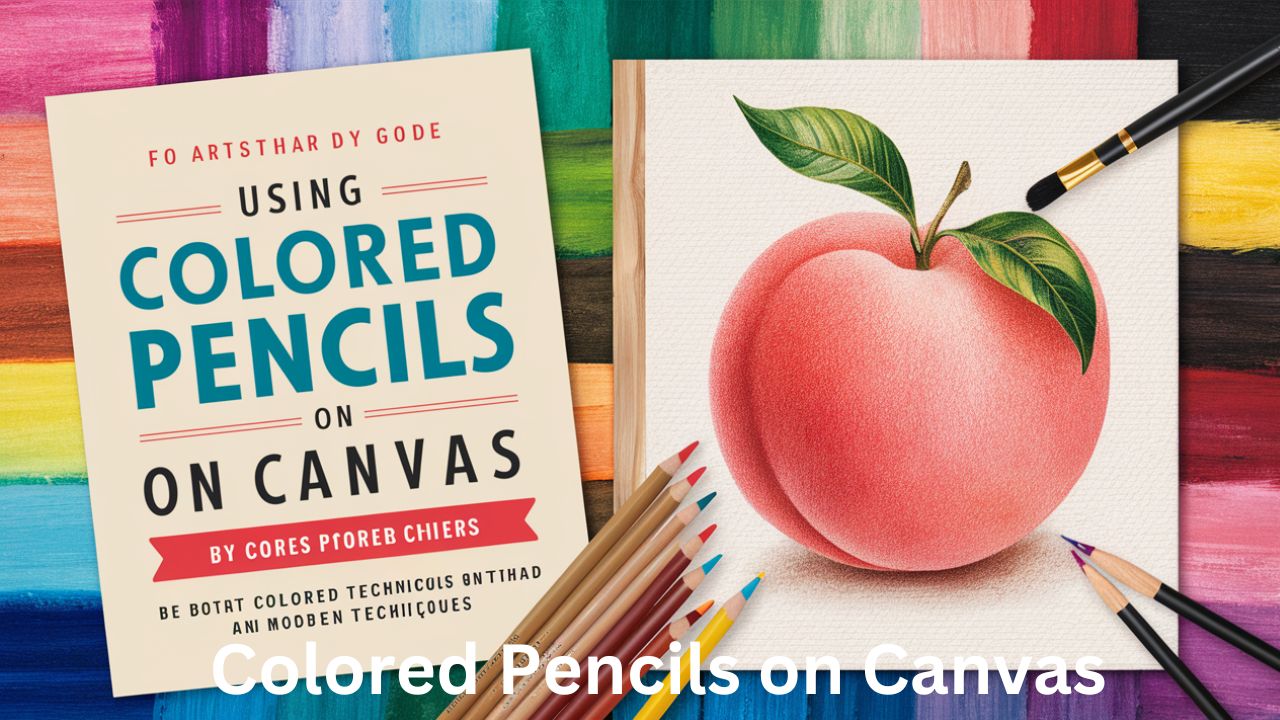
Colored Pencils on Canvas
Artists always explore new ways to express creativity using different materials. Many wonder if they can use colored pencils on canvas. The answer is yes, but it requires special techniques. Canvas has a textured surface, making it different from paper. Artists must prepare the surface properly to achieve vibrant and long-lasting results. With the right approach, colored pencils create stunning artworks on canvas.
Why Use Colored Pencils on Canvas?
Artists love experimenting with various surfaces to achieve unique effects. Canvas provides a sturdy and durable base for pencil artwork.
1. Unique Texture for Detailed Work
Canvas has a rough surface that creates beautiful textures. The weave allows for interesting shading and blending effects.
2. Increased Durability and Longevity
Canvas lasts longer than paper and resists damage from humidity and light. This makes artwork more durable over time.
3. Ability to Mix with Other Mediums
Artists can combine colored pencils with acrylics, pastels, or ink. This expands creative possibilities and enhances the final piece.
4. Versatile Surface for Different Techniques
Canvas allows artists to experiment with layering, burnishing, and other techniques. These methods enhance color richness and depth.
Best Colored Pencils for Canvas Art
Not all colored pencils work well on canvas. Some brands and types provide better coverage, vibrancy, and blendability.
1. Oil-Based Colored Pencils
Oil-based pencils offer smooth application and blend well on canvas. They create rich, intense colors with minimal effort.
2. Wax-Based Colored Pencils
Wax-based pencils work well but require multiple layers. Their softness makes them ideal for blending and shading.
3. Watercolor Pencils
Watercolor pencils allow for interesting effects when combined with water. They create a painterly look on canvas.
How to Prepare Canvas for Colored Pencils
Canvas requires proper preparation before applying colored pencils. This ensures smooth application and better color adhesion.
1. Apply Gesso for a Smoother Surface
Gesso helps fill the canvas texture, creating a smoother base. This makes it easier to apply colored pencils evenly.
2. Sand the Surface for Better Grip
Sanding removes rough areas and provides a slightly smoother texture. This helps pencils glide better on the surface.
3. Use a Transparent Base Layer
A thin acrylic or watercolor wash adds an underpainting. This helps enhance colors and adds depth to the final artwork.
Techniques for Using Colored Pencils on Canvas
Artists need special techniques to get the best results. The following methods help create vibrant and detailed artwork.
1. Layering for Intense Colors
Applying multiple layers builds depth and enhances color richness. Start with light layers and gradually increase pressure.
2. Burnishing for a Smooth Finish
Burnishing involves pressing hard with a white or colorless pencil. This blends colors and creates a polished look.
3. Blending with Solvents
Solvents dissolve the binder in colored pencils, making blending easier. Odorless mineral spirits or baby oil work well for this technique.
4. Adding Highlights and Shadows
Using lighter pencils for highlights and darker tones for shadows creates depth. This makes the artwork appear more realistic.
Common Challenges and Solutions
Artists may face difficulties when working with colored pencils on canvas. The following solutions help overcome common issues.
1. Pencil Skipping on Textured Surface
Canvas texture may cause pencils to skip, creating uneven color. Applying light layers and using a smooth gesso base helps fix this problem.
2. Difficulty in Blending Colors
Blending can be challenging due to the rough surface. Using solvents or a blending pencil helps create smoother transitions.
3. Colors Appearing Dull
Sometimes, colors look muted after application. Adding more layers and burnishing improves vibrancy and intensity.
4. Pencils Wearing Down Quickly
The rough surface may wear down pencil tips faster. Sharpening frequently and using gentle pressure extends pencil life.
Creative Ideas for Colored Pencil Canvas Art
Artists can explore many creative approaches when using colored pencils on canvas. These ideas inspire new projects and techniques.
1. Abstract Textured Drawings
The canvas texture adds a unique effect to abstract designs. Experimenting with bold colors and patterns enhances the artistic appeal.
2. Mixed Media Combinations
Combining colored pencils with acrylic paint, ink, or pastels creates stunning effects. Artists can experiment with layering and textures.
3. Portrait Drawings with Depth
Using colored pencils for portraits on canvas results in rich, detailed textures. Adding highlights and shadows enhances realism.
4. Nature and Landscape Artwork
Colored pencils work well for detailed landscapes. Layering different shades creates realistic trees, mountains, and skies.
Best Practices for Preserving Colored Pencil Canvas Art
Proper preservation ensures that colored pencil artwork on canvas remains vibrant and long-lasting. Following these tips helps maintain quality.
1. Use a Fixative Spray
Applying a fixative prevents smudging and enhances color permanence. Choose a high-quality, non-yellowing spray for best results.
2. Frame the Artwork
Framing protects artwork from dust and moisture. Using glass or acrylic coverings adds extra protection.
3. Store in a Dry Place
Humidity can affect colored pencil artwork over time. Storing in a cool, dry place prevents damage.
4. Avoid Direct Sunlight
Prolonged exposure to sunlight fades colors. Keeping artwork away from direct light preserves its vibrancy.
Frequently Asked Questions (FAQs)
1. Can I use colored pencils on any type of canvas?
Yes, but smoother canvases work better. Priming with gesso improves the application.
2. How do I make colors more vibrant on canvas?
Layering, burnishing, and using solvents enhance vibrancy. Adding an underpainting also helps.
3. What fixative should I use for colored pencils on canvas?
A spray fixative designed for colored pencils or pastels works best. It prevents smudging and fading.
4. Can I erase mistakes when using colored pencils on canvas?
Erasing is difficult due to the textured surface. Using a kneaded eraser or covering mistakes with acrylic helps.
5. How long does colored pencil artwork last on canvas?
With proper care, it can last for decades. Using a fixative and keeping it away from sunlight preserves the artwork.
6. Can I mix colored pencils with acrylic paint on canvas?
Yes, combining both mediums creates interesting effects. Applying colored pencils over dried acrylic paint works well.
Summary
Using colored pencils on canvas opens up new creative possibilities for artists. With the right techniques, preparation, and tools, artists achieve stunning results. Layering, burnishing, and blending techniques enhance the vibrancy and depth of artwork. Proper care ensures that colored pencil canvas art remains beautiful for years. Exploring different approaches allows artists to push creative boundaries and develop unique artistic styles.







